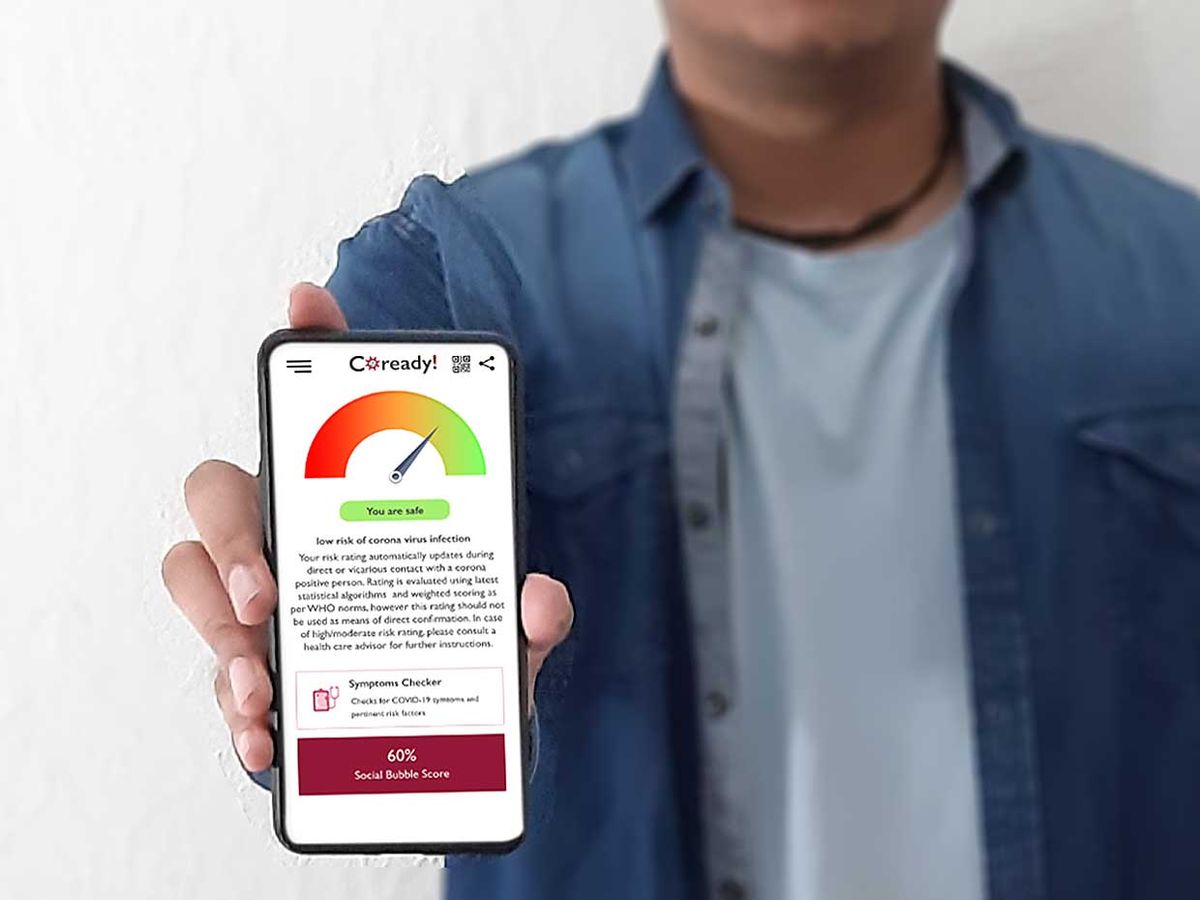THE INSTITUTE One of the safety measures recommended since the beginning of the pandemic is for people to maintain a distance of at least six feet (1.5 meters) from each other. But many of us can’t eyeball the distance on our own.
To help, IEEE Graduate Student Member Trushal Sardhara and other students from various universities in India have developed the mobile app Coready! It prompts its users to maintain social distancing by alerting them when they get too close to each other.
Sardhara is pursuing a master’s degree in mechatronics at the Hamburg University of Technology.
The Institute asked him about the mobile app.
This interview has been edited and condensed for clarity.
What problem are you trying to solve?
Many people are finding it difficult to remember to wash their hands frequently, wear masks when stepping outside, and most importantly, maintain social distancing.
We were inspired to create the mobile app—Coready!—by the Nudge Theory, developed by behavioral economist Richard Thaler [The theory suggests that positive reinforcement and indirect suggestions can influence the behavior and decision making of groups or individuals.] Coready! can help protect people from contracting the virus by nudging the user when someone else [nearby] with the app is failing to maintain [a safe distance].
What technologies are you using?
Coready! uses Bluetooth Low Energy [BLE] technology to [track] if someone, who also had the app installed on their phone, is in the vicinity of the user. The mobile app continuously transmits a unique identifier using BLE technology. Other mobile devices [with the app] that come in the vicinity of this signal receive it, identify the signal, and process it in the application.
Explain how your project works.
When another person, who also has Coready! installed on his phone, is within a 1.5-meter radius of the other user, the app sends a notification to his phone as a warning. The distance between users is calculated using the strength of the normalized Bluetooth signal.
The app can also determine whether the user interacts with people outside of his social bubble—who he comes into contact with the most—and violates social distancing. Coready! tracks and keeps a secure log of how many other app users he is coming into contact with and a Social Bubble Score is generated based on the information collected. The size of the user’s social bubble will be directly proportional to the score defined by the mobile app. If the user’s score is high, that means they have an increased chance of contracting the virus.
Coready! also can be integrated into third-party mobile apps being used for contact tracing.
What challenges have you faced, and how did you overcome them?
The main challenge was to develop an application that can work even if it is closed or if the user’s phone is in locked mode.
We encountered limitations with Android OS because it does not allow any application to run if the user closes it or locks his phone. To solve this, we used technology provided by Android OS that shows in the users’ notification bar that the application is still running.
What is the potential impact of the technology?
This application will help people maintain physical distance and limit their social bubble.
It can also be used by various organizations that have a large number of employees to ensure that social distancing rules aren’t violated unknowingly in places such as corporate offices, educational institutions, and manufacturing facilities.
How close are you to the final product?
Coready! can be downloaded on Android and iOS platforms.
We are continuing to update its features. We are currently working on implementing a contact tracing feature using blockchain technology to make it more robust, private, and decentralized.



